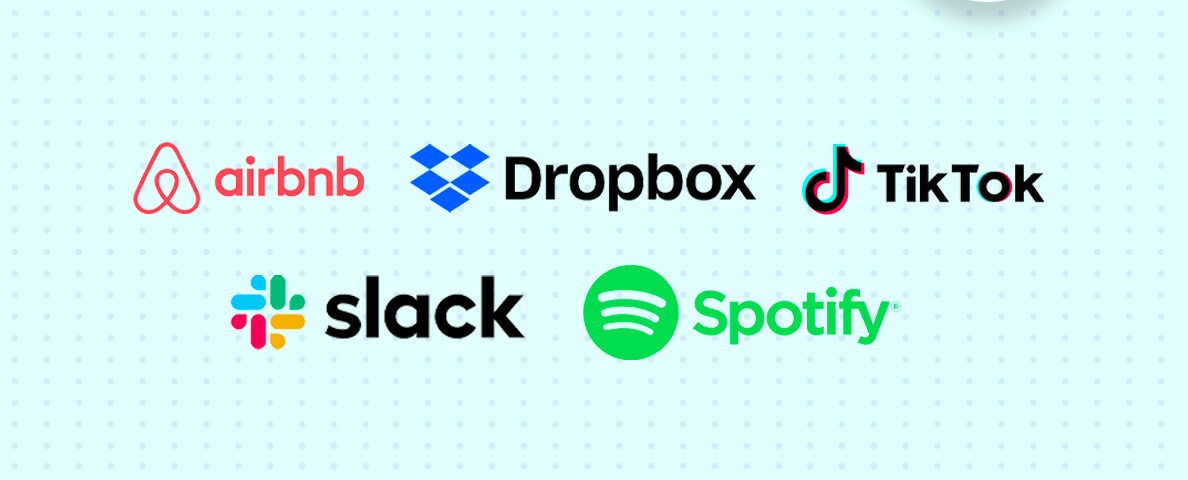Top 5 Growth Marketing Case Studies in 2023

The Future of Research: Advanced Trends and Directions in Scientific Inquiry
December 11, 2023
Top New Year’s Resolutions 2024
January 8, 2024In today’s fast-paced world, mobile apps have become a cornerstone of the economy across various markets and geographies. To stay competitive in the app industry, it’s essential to sustain your app’s growth. This is why app marketers are constantly striving to master growth marketing. To help you analyze what strategies can work for your mobile app project, we have compiled case studies that offer valuable insights into securing long-term growth.
Case Study 1: Airbnb
When it comes to planning a trip and finding a place to stay, Airbnb is one of the top options. The company has earned a reputation as a user-friendly and safe provider of hospitality services for millions of people around the world. While it has faced its fair share of challenges – particularly when the COVID-19 pandemic hit in 2020 – Airbnb has managed to weather the storm and continue moving forward. In this article, we will focus on Airbnb as an example of a Silicon Valley company that not only prioritizes its financial success but also strives to do the right thing for society, given its global reach and impact.
Growth marketing campaign objective
In 2007, Brian Chesky and Joe Gebbia, the co-founders of Airbnb, were looking for a place to rent in San Francisco. During their search, they saw the potential in the idea of renting out air mattresses as a bed and breakfast for people to stay. However, this brilliant idea was not easily scalable. Therefore, their objective for the growth marketing campaign was to find a way to scale up the idea.
Solution
In the early stages of Airbnb, the company’s founders, Brian Chesky, Joe Gebbia, and Nathan Blecharczyk, had to be innovative to raise capital as they did not have the $6.4 billion raised in 19 rounds as of 2022. To kick-start the company, they had to think outside the box, and in their first fundraising effort, they sold cereals with branding for the Democratic and Republican nominees, making the platform a part of the US Presidential elections. This unique strategy allowed them to raise $30k and get the company off the ground.
To find the first group of users for their platform, Brian and his team decided to turn to Craigslist. They allowed Airbnb’s users to post ads for their rentals on the popular classified ads platform, even though it was not actually allowed by Craigslist’s policies. This was around the year 2010 when Craigslist already had a large pool of users who were either offering their place for rent or looking for one to rent.
The poor-quality photos of properties offered for rent were a growth pain for Airbnb. To address this issue, the company started photographing listed rentals using high-quality cameras. Today, Airbnb employs 2,000 freelance photographers.
Yet another challenge that Airbnb faced on its path to growth was the fear that some people had of allowing strangers to live in their apartments and houses. To help mitigate this fear, the platform introduced social integration, which allowed users to see reviews from previous tenants. Another key factor in Airbnb’s growth was its referral program, which gave users the ability to share the platform with their friends and family.
Results
Airbnb has become a leading hospitality platform with a revenue of $8.4 billion as of 2022. They have 6.8k employees, 4 million hosts, and have hosted 800 million guests. The platform’s easy-to-use referral program and positive user experiences have led to millions of new users signing up for the service.
Case Study 2: Dropbox
Dropbox is the leading platform for file sharing, with 17.4 million paying users and $573 million in revenue as of Q2 2022. In the past, Apple attempted to acquire Dropbox, but the company’s team opted to remain independent. Today, Dropbox remains the go-to platform for individuals using a variety of desktop and mobile operating systems across their devices to share files with others.
Growth marketing campaign objective
To understand what Dropbox was trying to achieve during its early days of growth, let’s start by describing the state of the internet in 2008 – the year the app was first launched. At that time, the average download and upload speed was significantly slower than today, and all existing solutions for online file-syncing were designed exclusively for business-to-business (B2B) use. Dropbox had to convince individuals that safe and quick online file-sharing was not just for big corporations but was also available to them.
Solution
It’s worth noting that Dropbox achieved remarkable growth without spending anything on advertising. Instead, the company launched a referral program that incentivized users to invite others to the platform. In exchange for referrals, users were rewarded with additional disk space, which was highly valuable at the time. The basic plan offered only 5 GB of disk space, and users had to pay for more. As a result, there was a strong incentive for people to invite others and earn more free disk space through the referral program.
Results
After three years since its launch, Dropbox was able to earn $100 million in revenue in 2011. Now, it has shifted from being a file-sharing service to a popular app called TikTok, which is known for its short-form videos.
Case Study 3: TikTok
TikTok is a popular short-form video hosting service that ByteDance owns. Since its inception in 2016, the platform has experienced tremendous growth, generating $13 billion in revenue in 2023 and boasting 843 million monthly active users. The story of its phenomenal rise can be attributed to various factors, which I will outline in detail, with a focus on the key contributors.
Growth Marketing campaign objective
TikTok has achieved remarkable success in the field of marketing. One of their primary objectives was to succeed in the US market outside China, and it’s one of the few Chinese companies that has been able to do so. Many Chinese companies have tried to succeed in North America and Europe, but due to cultural differences, they have mostly failed.
Solution
TikTok’s success in breaking into the US and European markets can be attributed to its strategic use of influencer marketing. The company targeted top influencers on YouTube and Instagram, who created videos using the TikTok app and shared them on their channels. This helped to generate buzz and drive user acquisition.
In addition, TikTok’s focus on short-form, engaging videos and sophisticated algorithms that analyzed user behavior to suggest personalized content also contributed to its success. TikTok’s combination of influencer marketing and personalized content recommendations helped it to gain popularity quickly.
Results
TikTok has achieved an impressive feat by growing its user base to a billion in just two years. It is available in 150 countries and supports 75 languages, making it the sixth most popular social platform globally. The app is particularly popular among females, who make up 57% of its users. On average, users spend an hour daily browsing through the app.
Case Study 4: Slack
Since its launch in August 2013, the business instant messaging platform has effectively replaced email for project collaboration and employee communication.
Growth Marketing campaign objective
Slack’s growth story is unique because, at the time of its launch, there was no software category for business communication. Businesses were struggling to run projects using email and were unaware that a solution was coming. The real objective of the app’s growth campaign was to raise awareness amongst businesses and non-profits about better ways of communication.
Solution
The Slack team utilized word-of-mouth marketing, integration with other apps, and a keen ear for customer feedback to accelerate the app’s growth. One of Slack’s standout features was its channels, which allowed teams to organize discussions around specific topics. Early adopters were impressed with this feature and shared the app with their colleagues, helping to drive its popularity. Integration with other popular apps like Google Drive, Trello, and Dropbox also helped to streamline workflow for business teams. Although no V1 mobile app is perfect, Slack was responsive to user feedback and made adjustments to improve the app over time.
Results
Currently, the app has around 18 million daily users in 156,000 organizations worldwide. The company earned $902 million in revenue in 2021. It has become a vital tool for business communication, much like how Google is for search and YouTube is for video sharing. In December 2020, Salesforce acquired Slack for approximately $28 billion.
Case Study 5: Spotify
Spotify was introduced in 2006 as a legal platform for music streaming. This was during a time when music piracy was at its peak, and Apple’s iTunes was still new, based on the model of purchasing individual songs. The founders of Spotify saw it as a solution to combat music piracy.
Growth Marketing campaign objective
In the start, Spotify’s team was a group of pioneers in the music streaming field, similar to Slack. However, convincing music labels that streaming music was a good idea and would benefit everyone was a major challenge. Despite the difficulties, Spotify’s app has grown considerably and is now considered a default for the music business in 2023, having been adopted by Apple and embraced by the industry.
Solution
The company made efforts to persuade music labels about the potential of their platform. They utilized an ad-supported model to offer their music streaming service for free to attract people who weren’t willing to pay for subscription services. Spotify’s team has always prioritized the app’s user experience by carefully listening to user complaints and suggestions. They have been making improvements to the app year after year.
Results
There are 433 million people worldwide who listen to music on Spotify each month, and out of that number, 188 million are active users. Despite its massive user base, the platform has yet to turn a profit. However, in 2022, it managed to generate €11.72 billion in revenue.





